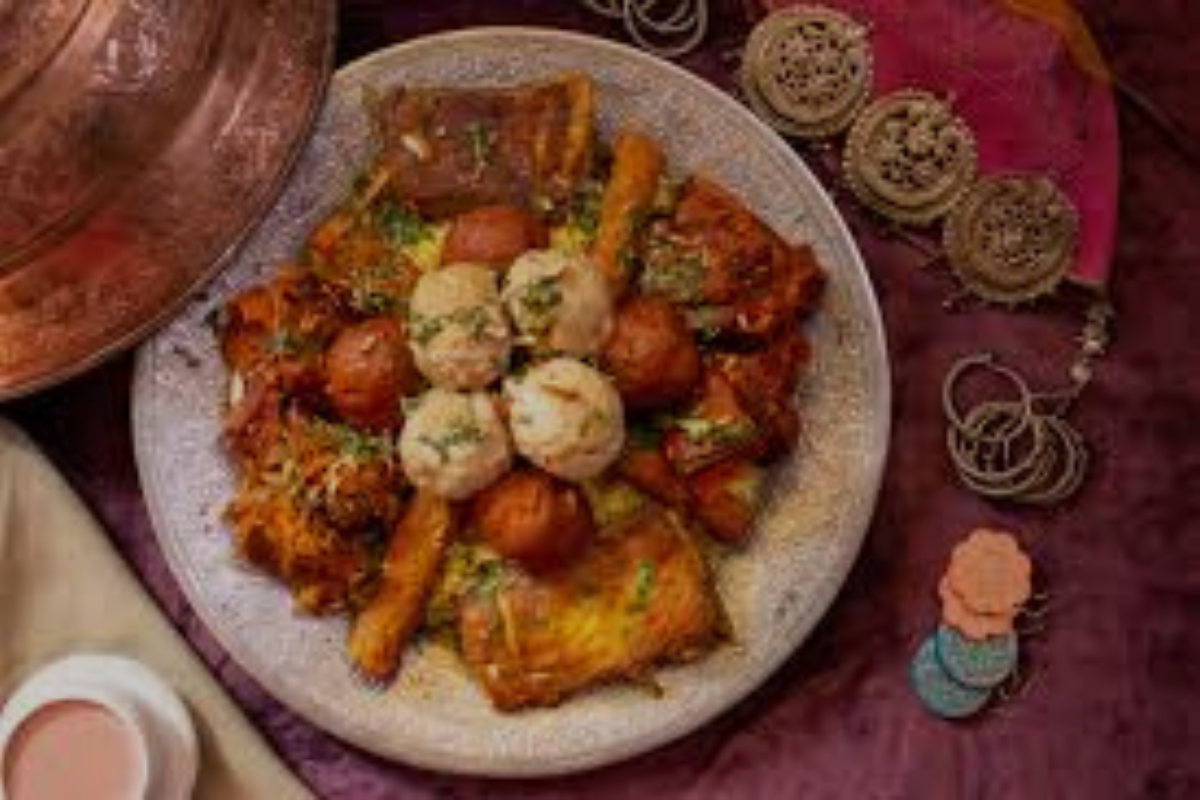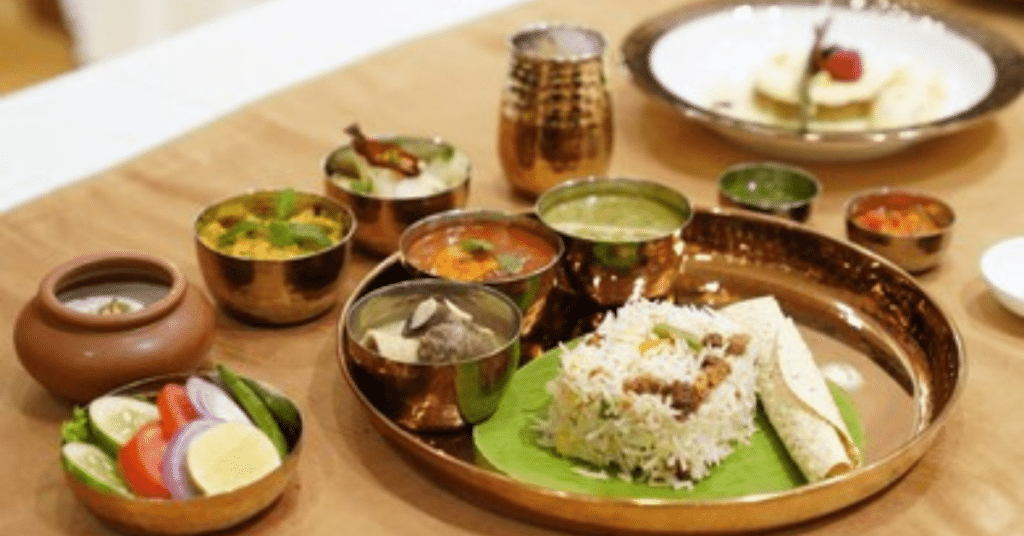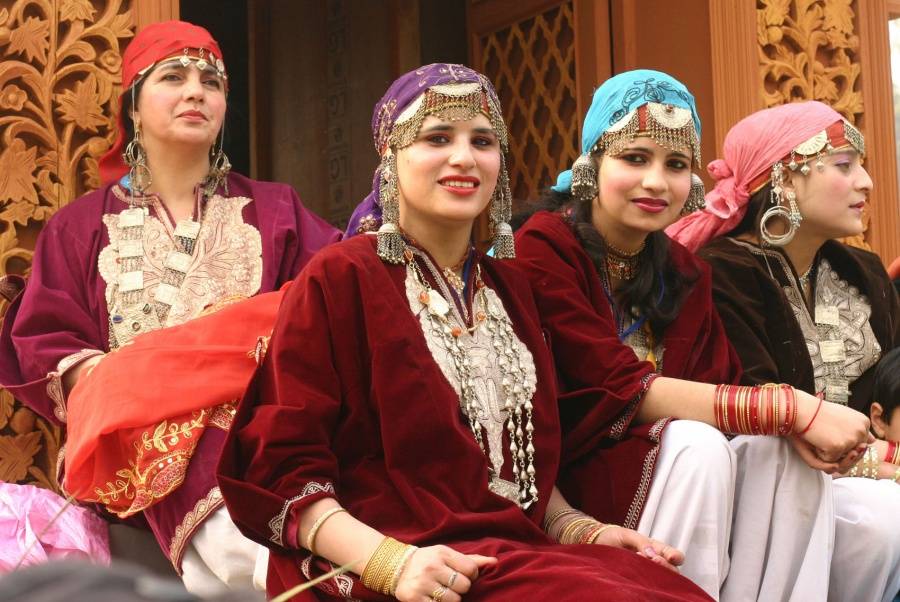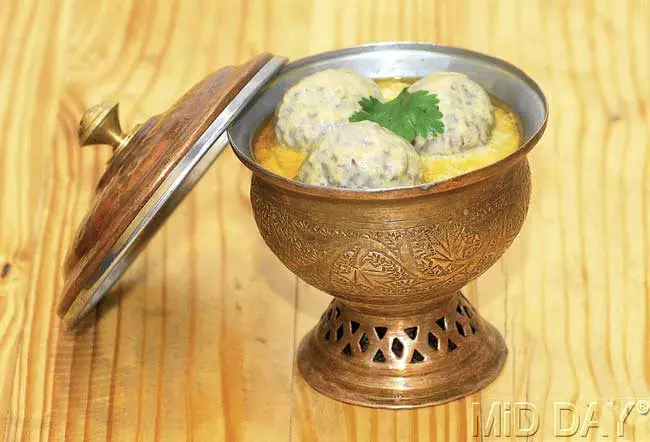Introduction: The Heart of Kashmiri Culture
Kashmir is often referred to as “Paradise on Earth,” not just for its stunning landscapes but also for its vibrant traditions, warm hospitality, and rich culinary heritage. At the core of Kashmiri culture is a profound respect for guests and community, beautifully showcased through the Kashmiri Wazwan feast. This royal banquet isn’t merely a meal; it’s a cultural celebration that embodies centuries of tradition, artistry, and pride.

In this article, we’ll delve into the origins, dishes, rituals, and significance of Wazwan, and how it captures the very essence of Kashmiri culture.
The Origins of Wazwan in Kashmiri Culture
The term Wazwan is derived from “Waza,” which means cook, and “Wan,” meaning shop or cooking place. The Wazas are master chefs who pass their culinary skills down through generations. The origins of the Kashmiri Wazwan feast can be traced back to Persian and Central Asian influences that arrived in Kashmir during the Mughal era. Over time, these influences merged with local flavors, resulting in a distinctive cuisine that symbolizes Kashmiri hospitality.
For centuries, Wazwan has graced weddings, festivals, and significant celebrations. It’s more than just food; it’s a status symbol and an art form that reflects the wealth, generosity, and cultural pride of Kashmiri families.
Wazwan: A Royal Culinary Experience
When it comes to meals, the Kashmiri Wazwan feast is something truly special, crafted with incredible attention and a touch of ceremony. A typical Wazwan can feature anywhere from 7 to 36 dishes, with a strong emphasis on meat, particularly lamb and mutton, which are favorites in Kashmiri cuisine. At the heart of the meal is rice, served on a large copper platter called a Trami. Four guests share one Trami, a beautiful gesture that embodies unity and togetherness—values that are deeply rooted in Kashmiri culture.
The Ritual of Serving Wazwan
The Wazwan experience kicks off long before anyone takes their first bite. Guests gather on the floor around the Trami, while attendants wash their hands in copper basins, a sign of respect and cleanliness. Then, the Waza begins to serve the dishes in a carefully curated order.
The sequence of dishes holds great significance, as each step is steeped in tradition:
1. The meal starts with rice accompanied by a few kebabs.
2. Next come several gravies and curries, each layered with care.
3. The grand finale is the Gushtaba—a delightful dish of minced mutton balls simmered in a yogurt-based gravy.
This order is sacred in Kashmiri culture; the Gushtaba, often referred to as the “king of dishes,” marks the conclusion of the feast.
Iconic Dishes of the Kashmiri Wazwan Feast
The array of flavors in Wazwan makes it an unforgettable culinary adventure. Here are some standout dishes:
1. Rogan Josh
Arguably the most renowned Kashmiri dish, Rogan Josh is a mutton curry infused with aromatic spices and red chilies, giving it a vibrant red hue. It strikes a perfect balance between spice and flavor, making it a must-have in Wazwan.
2. Rista
These succulent meatballs are cooked in a fiery red gravy. Rista is crafted from finely pounded lamb meat, resulting in a texture that melts in your mouth.
3. Tabak Maaz
These are fried lamb ribs that are first simmered in yogurt and spices, then deep-fried to crispy perfection. They’re often served early in the Wazwan as a delightful starte.
4. Yakhni
Imagine a light, aromatic curry made with yogurt that perfectly balances the rich gravies of other dishes. Yakhni is typically infused with the delightful flavors of fennel and cardamom.
5. Dum Aloo
For those who prefer vegetarian options, Dum Aloo is a delicious choice. These baby potatoes are slow-cooked in a blend of yogurt and spices, making them an ideal side dish.
6. Nadru Yakhni
This dish features lotus stem simmered in a yogurt curry, showcasing how Kashmiri cuisine celebrates local ingredients.
7. Gushtaba
As the grand finale of Wazwan, Gushtaba consists of finely minced mutton balls cooked in a delicate yogurt-based gravy. No Wazwan feast is complete without this dish. Also read,
Kashmiri Gushtaba: The Royal Dish That Defines Kashmiri Culture
When paired with rice and accompanied by condiments like chutneys, salads, and pickles, these dishes create a royal spread that makes the Kashmiri Wazwan feast truly unforgettable.
Wazwan and Kashmiri Weddings
In Kashmiri weddings, Wazwan takes center stage. Regardless of whether the ceremony is simple or extravagant, the feast is always the highlight of the celebration. Families often host hundreds of guests, and the variety of dishes served in Wazwan reflects the host’s generosity.
The Wazas start their preparations days ahead, using fresh, local ingredients. On the wedding day, the cooking becomes a communal event, with enticing aromas wafting through the air and building excitement among guests. This embodies the essence of Kashmiri culture, where food transcends mere sustenance to become a symbol of love, unity, and respect.
The Role of the Waza (Master Chef)
Wazas are the custodians of this culinary heritage. Trained over generations, they possess the secrets of recipes and techniques that make Wazwan so special. Their cooking is regarded as an art form, and being a Waza is a highly respected role in Kashmiri society. Without the Waza, Wazwan simply wouldn’t exist.
Symbolism of Wazwan in Kashmiri Culture
Wazwan isn’t just a meal; it’s a vibrant social and cultural experience. It embodies:
Hospitality → Guests are welcomed like family, and every effort is made to ensure they feel at home.
Unity → Sharing a single Trami among four people symbolizes togetherness and community.
Pride → Hosting a proper Wazwan is a way to showcase cultural pride and honor traditions.
Celebration → Be it a wedding, Eid, or any festival, Wazwan is the heart of joyful gatherings.
Modern Adaptations of Wazwan
Traditionally, Wazwan was reserved for weddings and grand events, but now it’s found its way into restaurants and even smaller get-togethers. Tourists visiting Kashmir often seek out a mini-Wazwan platter to savor the rich flavors of Kashmiri cuisine. Some innovative chefs are also blending Wazwan dishes with international flavors, all while keeping the authentic spices and cooking techniques intact.
This blend of tradition and modern flair ensures that Wazwan stays relevant in today’s world, proudly representing the essence of Kashmiri culture.
Global Recognition of the Kashmiri Wazwan Feast
Lately, food bloggers, travelers, and chefs from all corners of the globe have been shining a spotlight on Wazwan through documentaries, YouTube videos, and cooking shows. It’s often hailed as one of the most distinctive and elaborate feasts out there. This worldwide attention not only elevates Kashmiri cuisine but also showcases the vibrant culture of Kashmir to audiences far and wide.
Conclusion: Wazwan as the Heart of Kashmiri Culture
The Kashmiri Wazwan feast is more than just a meal—it embodies history, identity, and cultural pride. From the meticulous preparation by talented Wazas to the joy of sharing a Trami, Wazwan beautifully illustrates the values of unity, generosity, and hospitality that are at the core of Kashmiri culture.
With every bite of Rogan Josh or every sip of Yakhni, you’re savoring centuries of tradition. And when the last Gushtaba is served, it signifies not just the end of a meal but the culmination of a cultural experience. Indeed, Wazwan is the crowning glory of Kashmiri culture, a feast that bridges the past and the present, bringing people together in joyous celebration.




